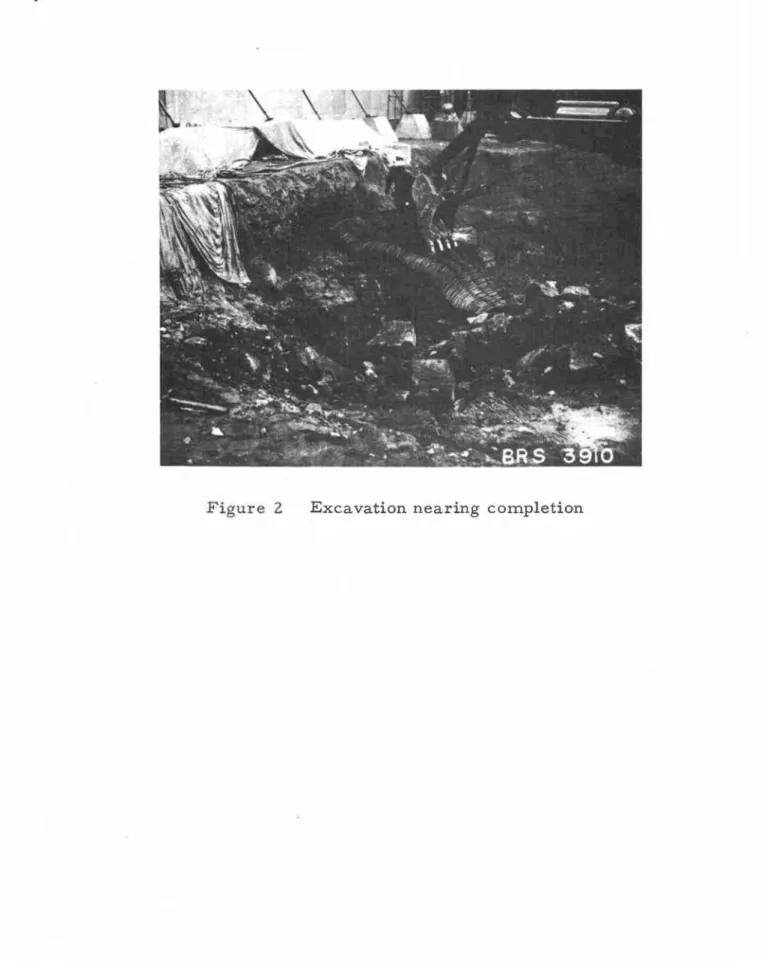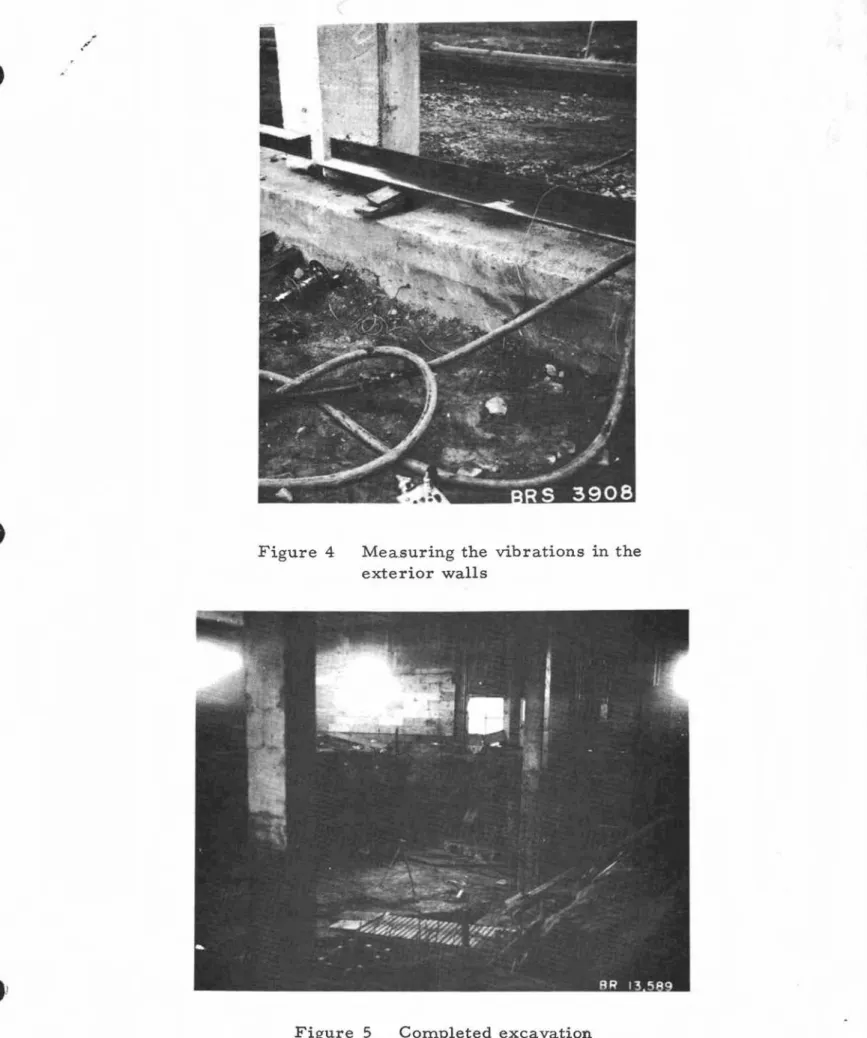Publisher’s version / Version de l'éditeur:
Technical Note (National Research Council of Canada. Division of Building Research), 1965-09-01
READ THESE TERMS AND CONDITIONS CAREFULLY BEFORE USING THIS WEBSITE.
https://nrc-publications.canada.ca/eng/copyright
Vous avez des questions? Nous pouvons vous aider. Pour communiquer directement avec un auteur, consultez la
première page de la revue dans laquelle son article a été publié afin de trouver ses coordonnées. Si vous n’arrivez pas à les repérer, communiquez avec nous à PublicationsArchive-ArchivesPublications@nrc-cnrc.gc.ca.
Questions? Contact the NRC Publications Archive team at
PublicationsArchive-ArchivesPublications@nrc-cnrc.gc.ca. If you wish to email the authors directly, please see the first page of the publication for their contact information.
NRC Publications Archive
Archives des publications du CNRC
For the publisher’s version, please access the DOI link below./ Pour consulter la version de l’éditeur, utilisez le lien DOI ci-dessous.
https://doi.org/10.4224/20358925
Access and use of this website and the material on it are subject to the Terms and Conditions set forth at
Blasting Vibrations in the Vicinity of Fresh Concrete Construction
Ward, H. S.
https://publications-cnrc.canada.ca/fra/droits
L’accès à ce site Web et l’utilisation de son contenu sont assujettis aux conditions présentées dans le site LISEZ CES CONDITIONS ATTENTIVEMENT AVANT D’UTILISER CE SITE WEB.
NRC Publications Record / Notice d'Archives des publications de CNRC: https://nrc-publications.canada.ca/eng/view/object/?id=0829d119-40d7-4856-ad42-5ecf42d0bacc https://publications-cnrc.canada.ca/fra/voir/objet/?id=0829d119-40d7-4856-ad42-5ecf42d0bacc
NATIONAL RESEARCH COUNCIL OF CANADA
DIVISION OF BUILDING RESEARCH
,
TEe
JHl
N II
C
AIL
LIMiTED OiS1RlBUTlON
NOTE
No.
455 PREPARED BY H. S. WardPREPARED FORL'lml e't d d' t 'b t"lS rl u lon
SUBJECT
CHECKED BY TDN APPROVED BYNBH
DATE September 1965
BLASTING VIBRATIONS IN THE VICINITY OF FRESH CONCRETE CONSTRUCTION
On 27 October 1964, an inquiry was directed to the Division of Building Research about the effect of blasting vibrations on a newly-placed reinforced concrete slab roof for a new laboratory building in the Ottawa area. The situation was rather unusual in that most of the roof for the building and the exterior walls were in place when it was realized that a pit for waste treatment had to be excavated inside the construction site in the solid limestone rock. The 35-ft square excavation, which was to be about 15 ft deep, was begun with jackhammers, but the excavation of 5 ft of rock took so long that
blasting appeared to be the only solution to keep the project on schedule.
At the time when blasting was contemplated, the fresh concrete of the roof was supported on columns and scaffolding about 16 ft above ground level and about 40 ft from the nearest side of the excavation (Figure 1). Four columns in the area of the excavation also had to be removed, but they had only been completed to about 2 ft above ground level. As there was no previous information available on the behaviour of green concrete to blasting vibrations, it was recommended that a total charge of 1. 6 lb be used with 0.4 lb per delay.
Four M. B. velocity-sensitive transducers were located in positions I and 2 at the foot of the columns. The two transducers at each location measured the vertical and horizontal components of the ground motion. The results for the vibrations due to the jackhammer
/
2
-operations and blasts at the centre and edge of the excavation are shown in Table 1. The predominant frequency of the ground motion, as shown by the galvanometer records, was between 35 and 40 cps.
No damage was observed in the roof slab so the operation was continued with the same amount of charge, and by the following day the excavation was almost complete (Figure 2). At this stage another problem occurred because the exterior walls were braced in position by struts and were on a concrete footing which was sitting on compacted fill (Figure 3). The blasting had to take place within 15 ft of these walls, and it was feared that the walls might be displaced as a result of the bIas ting.
It was decided to monitor the blasts in positions 3 and 4 to determine the level of vibration to which the concrete footing was being subjected. Two transducers were placed on the ground in position 3,
about 1 ft from the exterior wall, and another two were placed on the concrete footing (Figure 4). At each location the vertical and horizontal components of motion were recorded.
The results from three blasts are shown in Table I I. For the first and second shot the charge was 1. 6 lb and for the third shot 1. 2 lb. The first shot was about 20 ft away from the wall in a confined part of the excavation, the second and third shots were near a free face and also about 20 ft from the exterior walls. The predominant frequency of the ground motion was again between 35 to 40 cps.
The job of excavating this waste treatment pit was completed (Figure 5) without causing any damage to the roof or the exterior walls, so the levels given in Tables I and II can be looked upon as ウ。ヲ・セ levels for any job of a similar nature. In the case of the roof it is the move-ment at the top of the column that determines the stress induced in the roof, but unless there is a possibility of the natural frequency of the columns and supported roof coinciding with the frequency of ground motion, the values in Table I can be applied directly.
For the sake of economy it is necessary that each charge
should remove enough rock so that the length of time required to remove the rock takes about as long as it does to prepare the next charge. These conditions were not met at this particular site as a result of the restrictions recommended and adopted in this case, but it now seems that it would
have been safe to use, say up to eight delays/charge, i. e. a charge of
3
-Another practical factor that made itself apparent during the monitoring of the blasts was the reduction in vibration level brought about by the presence of a free face in the excavated area. Thus it may be profitable, during a blasting operation, to arrange for the provision of free faces so that larger charges can be used without increasing the vibration level. The provision of these free faces would involve a certain amount of preparatory work, probably with smaller charges than those planned for the main excavation.
Table I
Velocities at Base of Columns Caused by Charges of 1.6 lb (0.4 lb/ delay)
Vibrations due to: Position 1 Position 2
Horizontal Vertical Horizontal Vertical Velocity, Velocity, Velocity, Velocity,
in. / sec in./ sec in. / sec in. / sec
Operation of 3
-3 -4 -3 -4
jackhammer sand 4.3xlO 5.0xlO 1. 9xl 0 5.0xlO 1 compressor
Blast at centre
-2 -2 -2 -2
of excavation 5.7xlO 1. 3xlO 3.lxlO 3.lxlO Blast at edge
-1 -1 -2 -2
of excavation 2.2xlO 1. 7xl 0 4.2xlO 4.7xlO neare st the slab
Table II
Blasting Vibrations Nea;r Exterior Walls
Position 3 Position 4
Horizontal Vertical Horizontal Vertical Shot Number Velocity, Velocity, Velocity, Velocity,
in./ sec in. / sec in. / sec in./ sec
1
-
-
8.5x10-1 6.4x10-12 5.8x10-1 2.5x10-1 5.9x10-1 3.1x10-1
,.'
15'
セMGセ
Position 4
Position 1
./
--,-Exterior walls,
resti ng on conc.
footing, held in
place by struts
I
;-•
--1-
Position 3
25'
Edge of
excavation
セウ
of
16
sq.
in.
column
Roof slab cast thi s far
Position 2
FIGURE
1
,
-,
P
recast concrete
exterior wall
Transducers
Compacted fi II
Proctor no. 90
Ie
FIGURE
3
Figure 4 Mea.suring the vibrations in the exterior walls

